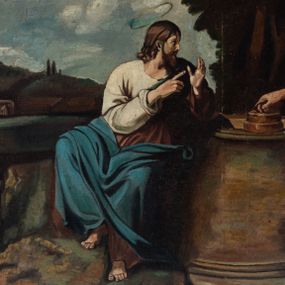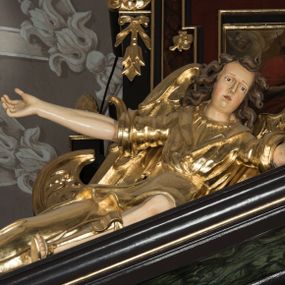
Pensive Christ (sculpture)
Place
Racławice Olkuskie
Parish
Nativity of the Blessed Virgin Mary parish in Racławice Olkuskie
Identifier
DZIELO/05999
Amount
1
Catalogue note author
Maria Działo
Abstract
The sculpture of the Pensive Christ was created in the 19th century in the workshop of a folk sculptor, which is indicated by the general anatomical details and a certain ineptitude in the work with the mass. It represents the simplest iconographic type of the Pensive Christ: without additional elements such as purple coat, Adam's skull or reed in hand. The representation illustrates one of the events of the Way of the Cross, widely described in medieval literature, according to which Christ, before being crucified, sat alone on a Golgotha stone, which was located in a hollow called "Carcer Christi". The most important feature of the Pensive Christ representations is the depiction of him as a lonely and tormented man. The whole expression of the work is focused on the face of the figure. However, while in Gothic sculpture the face of Christ is full of expression and pain, in folk sculpture it expresses lyrical sadness and peaceful meditation. It is evidenced not only by the formal features of the sculptures, but also by the names given by folk culture to these figures: Sorrowful Christ, Aching Christ, Merciful Christ, Weeping Christ, or the most popular name, Pensive Christ.
Other works from this place
Similar works
How to cite?
Maria Działo, "Pensive Christ (sculpture)", [in:] "The Sacred Lesser Poland Heritage", 2025, source: https://sdm.upjp2.edu.pl/en/works/pensive-christ-sculpture





















